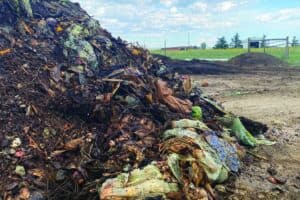Rising food prices, economic crises and concern about natural disasters such as the fires and floods of the last year have encouraged some in Falcon and Colorado Springs to learn more about the growing self-sufficiency ñ or prepper ñ movement. Some are making sure they have enough food and water to make it through a blizzard or extended power outage. Others are taking it a step further to completely reduce their day-to-day reliance on stores and public utilities.ìIf I could make a wish with a genie, I’d be a homesteader,î said Brian Greenleaf, teacher at the Colorado School for the Deaf and Blind in Colorado Springs and hobby prepper. ìI’m very interested in gardening, animals and other off-grid stuff. We’ve kept rabbits and chickens and try to keep our pantry stocked with food. We have a bit of water set back and try to grow as much of our own food as possible.î Greenleaf and some like-minded friends attended the Denver Self-Reliance Expo in October. The traveling event provides seminars and vendor displays to people interested in the self-sufficiency movement. ìIt was a great event,î Greenleaf said. ìI learned a lot about permaculture, the sustainable approach to intensive agriculture. They had speakers on bee keeping, medical care and fruit trees that survive on the Front Range. It got me excited about a lot of new things.îThe Federal Emergency Management Agency recommends everyone should store one gallon of water per person per day, for at least a three day supply. FEMA also recommends having on hand at least three days of non-perishable food and the means to cook without power or gas. Some preppers aim to have six months of food or food production available in case there is a long-term disruption in stores’ ability to keep shelves stocked. Numerous websites and blogs are available to teach people how to make their own food staples and survive long-term utility failures.The supplies and skills must come from somewhere. When people have a perceived need for a product or service, there is usually someone who can make money providing it. Businesses such as Buckley’s Homestead Supply in Colorado Springs and Thrive shelf-stable food cater to those who want to stock their pantry and make their own soaps, cheeses and other staples.ìI started getting interested in prepping by educating myself, my friends and family,î said Lindsey Mote, former Thrive representative. ìAfter a while of talking about it so much, I decided to start getting paid for it.î Mote sold shelf-stable foods such as freeze-dried fruits and meats to friends and family who were getting started storing long-term food supplies. She is now pursuing a career in real estate and has stepped away from food sales. ìBut we still prep and stock our pantry with it. We have about six months of food set aside,î she said.Craig McConnell, Falcon real estate agent, said he has sold more acreage land in the last 10 months than in the previous four years combined. ìPeople are getting sick and tired of being in the city,î he said. ìI’m seeing more of that all the time.î However, McConnell warns that buying a large plot of land does not mean instant self-sufficiency. ìSome are city slickers wanting to be a farmer, but don’t have the ins and outs of making it work,î he said. ìYou can’t just easily go out on 40 acres and expect to live off it right away. It’s just not that feasible.îBlogger and small-scale farmer Christine Faith, who writes about backyard food production for her http://righttothrive.org site, said it is feasible. However, it is challenging with the soils and climate of Colorado. ìSoil is an ongoing battle in Colorado,î Faith said. ìOur organic loads are half to a third of what they need to be. It took two years for us to get the builds in place and another year to put the plants in. You really need to plan it.î Faith speaks at self-sufficiency conferences across the country and offers paid classes online and in person.The National Geographic Channel shows that Doomsday Preppers and other popular culture references to the survival extremist movement have created a negative image of the self-sufficiency movement. ìThe word ‘prepper’ is linked with fear,î Faith said. ìWe didn’t start doing this out of a place of fear. We’re not gun-toting ammo stockpilers.îìWe don’t have a lot of the crazy stuff,î Greenleaf said. ìBut if I can make it instead of buy it, I’d rather give it a shot. We’re trying to put ourselves in a position where we can be more rural. I don’t like my neighbors telling me I can’t have a goat.îEven if what prepper bloggers term ìThe End of the World as We Know Itî doesn’t happen any time soon, county preppers believe their actions will help them in good times as well. ìIt answered my concerns about helping the environment,î Faith said. ìIt’s more control over our food, nutrition and food prices any time.î






